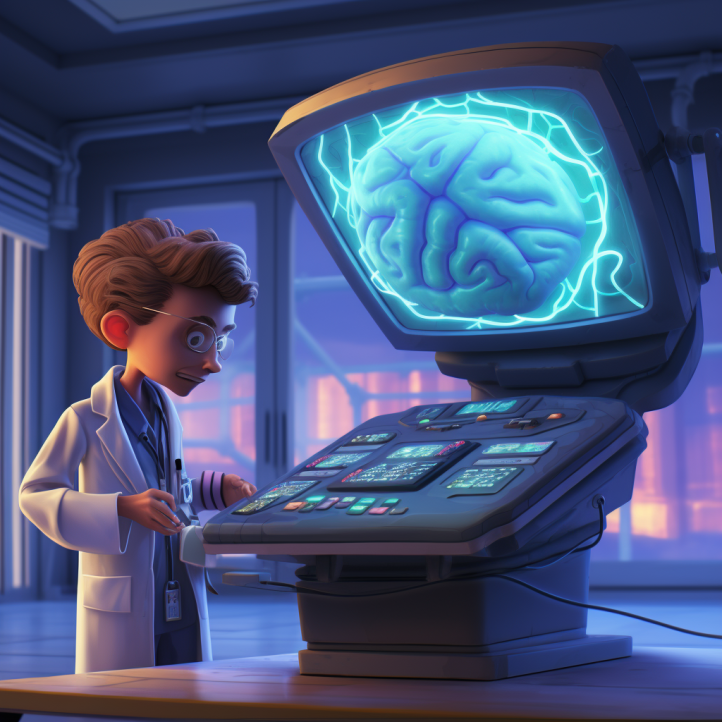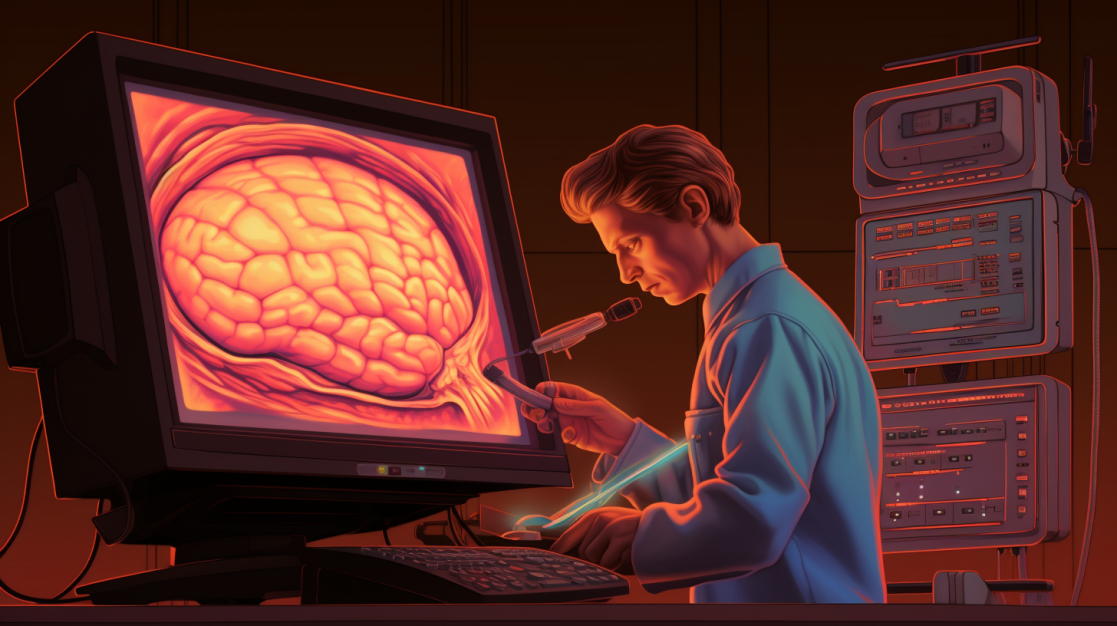Our brains contain around 100 billion neurons communicating through an intricate web of connections.
This complex circuitry controls everything we think, feel, and do.
But sometimes things can go wrong, leading to neurological disorders like epilepsy, Parkinson’s disease, depression and Alzheimer’s.
An exciting new approach called transcranial ultrasound stimulation (TUS) is showing great promise as a non-invasive way to treat neurological conditions by precisely modulating brain activity.
Key Facts About Transcranial Ultrasound:
- Uses focused sound waves to stimulate or suppress activity in targeted brain regions
- Allows accessing deep brain structures without surgery
- Provides millimeter spatial resolution
- Shows therapeutic effects in animal models of many disorders
- Safe, painless and doesn’t cause tissue damage at low intensities
- Portable devices make it practical for clinical use
- Still an emerging technology requiring more research before widespread adoption
Source: Front Neurol. 2023
How Does Transcranial Ultrasound Stimulation (TUS) Work?
TUS focuses ultrasonic waves through the skull onto specific areas of the brain.
It takes advantage of the fact that low intensity ultrasound can penetrate deep into tissue without causing damage.
The ultrasound waves exert mechanical and thermal effects on neurons and other brain cells.
This alters their activity in ways that can have therapeutic effects or enhance normal function.
TUS devices use piezoelectric transducers to generate and focus the ultrasonic waves.
The stimulation frequencies, intensities and pulse patterns can be adjusted to target different brain regions and cell types.
The ultrasound can be focused on structures as small as a cubic millimeter.
This allows precision targeting of even deep subcortical regions like the thalamus or hippocampus without affecting surrounding areas.
Current TUS research uses intensities below the threshold that could cause tissue damage.
The only sensation is a gentle warmth in the targeted spot that dissipates quickly.
TUS Technology Allows Non-Invasive Deep Brain Neuromodulation
Neuromodulation means altering how neurons communicate by stimulating or suppressing their activity.
This can restore balance in brain circuits that have become dysfunctional.
Up until now, most neuromodulation techniques like deep brain stimulation required surgically implanting electrodes.
TUS provides a way to stimulate or inhibit deep brain regions non-invasively.
This opens up opportunities to modulate problematic subcortical areas involved in many neurological disorders.
It also expands possibilities for enhancing cognitive functions like memory formation.
The precision targeting of TUS allows stimulating distinct neuron types and brain structures.
Different ultrasound parameters can excite or inhibit neural activity.
Much like programming a pacemaker, clinicians could customize TUS protocols for each patient’s needs.
The stimulation could then be fine-tuned over time for optimal results.
TUS Research: Targeting a Range of Neurological Conditions

Scientists have begun exploring the potential of TUS to treat diverse neurological disorders in animal models.
So far, the results have been very promising.
The most research has focused on using TUS for Parkinson’s disease, Alzheimer’s disease, epilepsy, depression and essential tremor.
But studies are also looking at many other conditions.
Here’s a breakdown of some of the main areas TUS research is targeting:
Epilepsy
- TUS of thalamus reduced seizures in rat models by regulating excitatory & inhibitory synaptic transmission
- Also decreased epileptic activity in mice, rats & monkeys
- Small human trials show some anti-seizure effects
Essential Tremor
- TUS suppressed tremors in animal models by stimulating the inferior olive
- Being tested clinically as an alternative to thalamic deep brain stimulation
Parkinson’s Disease
- TUS improved motor deficits in mouse & rat models by protecting dopamine neurons
- Allows deep brain neuromodulation without surgery
- Could enhance effects of dopamine replacement therapy
Alzheimer’s Disease
- TUS reduced amyloid plaques & tau tangles and improved cognition in mouse models
- Opening blood-brain barrier with TUS increased antibody delivery in mice & humans
- Small studies show TUS decreases amyloid deposits in Alzheimer’s patients
Depression
- TUS of prefrontal cortex reduced depressive behaviors in rat models
- Small trials show TUS can improve mood in depressed patients
The studies above highlight the major areas of research so far.
But scientists are also investigating using TUS for stroke recovery, PTSD, OCD, chronic pain, autism and enhancing cognitive functions.
The field is still young. But the incredible versatility of TUS technology means the possibilities are endless.
Scientists are Unraveling the Complex Mechanisms of TUS Neuromodulation
Researchers are working to gain a detailed understanding of how transcranial ultrasound affects neuronal functioning on a cellular level.
Though not fully understood yet, it seems TUS induces neuromodulation through a combination of thermal, mechanical and even auditory effects.
Here are some of the ways TUS is thought to influence brain cell activity:
- Gently heating neurons alters electrical firing patterns
- Mechanical pressure waves activate ion channels like TRPA1
- Cavitation effects sensitize cell membranes
- Stimulating auditory pathways causes indirect effects
- Vibrating cytoskeletal microtubules through resonance
The biophysical effects of ultrasound produce complex downstream changes in neurotransmitters, gene expression, blood flow and more.
Teasing apart these intricate molecular mechanisms will allow fine-tuning ultrasonic neuromodulation for optimal therapeutic stimulation.
Advancing TUS Technology to Translate Research Into Clinical Practice
The successes of TUS in animal models highlight its enormous clinical potential.
But work remains to translate this research into viable treatment options.
Researchers must conduct rigorous human trials to assess effectiveness for different conditions.
Technical advances are also needed to streamline the technology for practical use.
Here are some ways researchers are working to advance TUS towards mainstream clinical applications:
- Determining optimal stimulation parameters for each disorder
- Developing algorithms to customize treatment protocols
- Miniaturizing and automating ultrasound transducers
- Incorporating brain imaging and neural feedback for precise targeting
- Combining TUS with other modalities like drugs, stem cells or electrical stimulation
- Designing helmets and cap devices for consistent transducer positioning
With continued research progress, we may one day see TUS clinics treating brain disorders with a simple ultrasound headset device!
The Future is Bright for Transcranial Ultrasound Neuromodulation
TUS is at the cutting edge of neuromodulation research. Its non-invasive nature and unmatched combination of depth penetration and precision make its potential truly exciting.
While still an emerging technology, TUS has already shown incredible promise for modulating pathological brain activity underlying neurological disorders.
With ongoing advances, TUS could soon transition from the lab to the clinic.
Its clinical adoption promises to transform the treatment options available for many currently debilitating brain disorders.
Beyond therapies, the capacity to non-invasively stimulate any brain region also opens doors for using TUS in cognitive augmentation and human enhancement applications.
In coming years, TUS may fundamentally change how we diagnose and treat neurological conditions.
Its impact could compare to innovations like psychoactive medications, neuroimaging and deep brain stimulation.
The brain remains the most enigmatic frontier in medical science.
TUS now provides an unprecedented window into subtly manipulating its activity without surgery.
Unlocking the full capabilities of this technology will require integrating insights across disciplines like neuroscience, engineering and AI.
But the potential to heal distressed minds and expand cognitive potential makes it well worth the effort.
References
- Study: Transcranial low-intensity ultarsound stimulation for treating CNS disorders: a promising therapeutic application
- Authors: Yun-Yun Hu et al. (2023)







